
Fundamentals
The delicate equilibrium we name pH balance, a concept so foundational to the vitality of our hair and scalp, holds a significance extending far beyond mere chemistry. It speaks to the very essence of life’s subtle harmonies, mirroring the ancestral understanding that the natural world provides all we require for sustenance and well-being. For textured hair, particularly within the rich heritage of Black and mixed-race communities, comprehending this balance is akin to tuning into an ancient frequency, a whisper from generations past guiding us toward optimal care.
At its most straightforward, the pH scale offers a measurement of how acidic or alkaline a substance registers. This numerical continuum spans from zero to fourteen. A value of seven denotes neutrality, neither acidic nor alkaline. Numbers falling below seven indicate increasing acidity, while those rising above seven signify increasing alkalinity.
Our skin, including the scalp, and the hair strands themselves, naturally exist within a slightly acidic range, typically resting between 4.5 and 5.5. This inherent acidity forms a protective shield, often referred to as the acid mantle, a guardian against environmental stressors and microbial intrusions.
The pH balance for textured hair represents a continuum of care, from elemental chemistry to ancestral wisdom, ensuring vitality and resilience.
This inherent acidity of hair and scalp is not a random occurrence; it is a meticulously crafted biological design. The cuticle, the outermost layer of the hair shaft, resembles tiny, overlapping scales. In an acidic environment, these scales lie flat and smooth, creating a uniform surface that reflects light, contributing to a healthy sheen. This smooth alignment also seals in precious moisture, preventing dehydration and maintaining the hair’s structural integrity.
Conversely, an alkaline environment causes these cuticle scales to lift and swell, leaving the hair vulnerable. Such an open state allows internal moisture to escape readily, leading to dryness, frizz, and increased susceptibility to breakage. For hair with intricate curl patterns, where the cuticle is already naturally more prone to lifting at the curves and bends, maintaining this acidic equilibrium becomes even more paramount.
Across diverse ancestral practices, communities intuitively grasped the principles of pH, even without modern scientific nomenclature. Their methods, honed over centuries, demonstrate an innate recognition of how different natural ingredients interacted with hair. Observing the effects of various plant extracts, clays, and waters on hair’s texture, strength, and appearance, they developed sophisticated rituals that, by their very nature, honored this delicate balance. These traditional approaches were not accidental; they were born from deep observation and an enduring connection to the earth’s offerings.
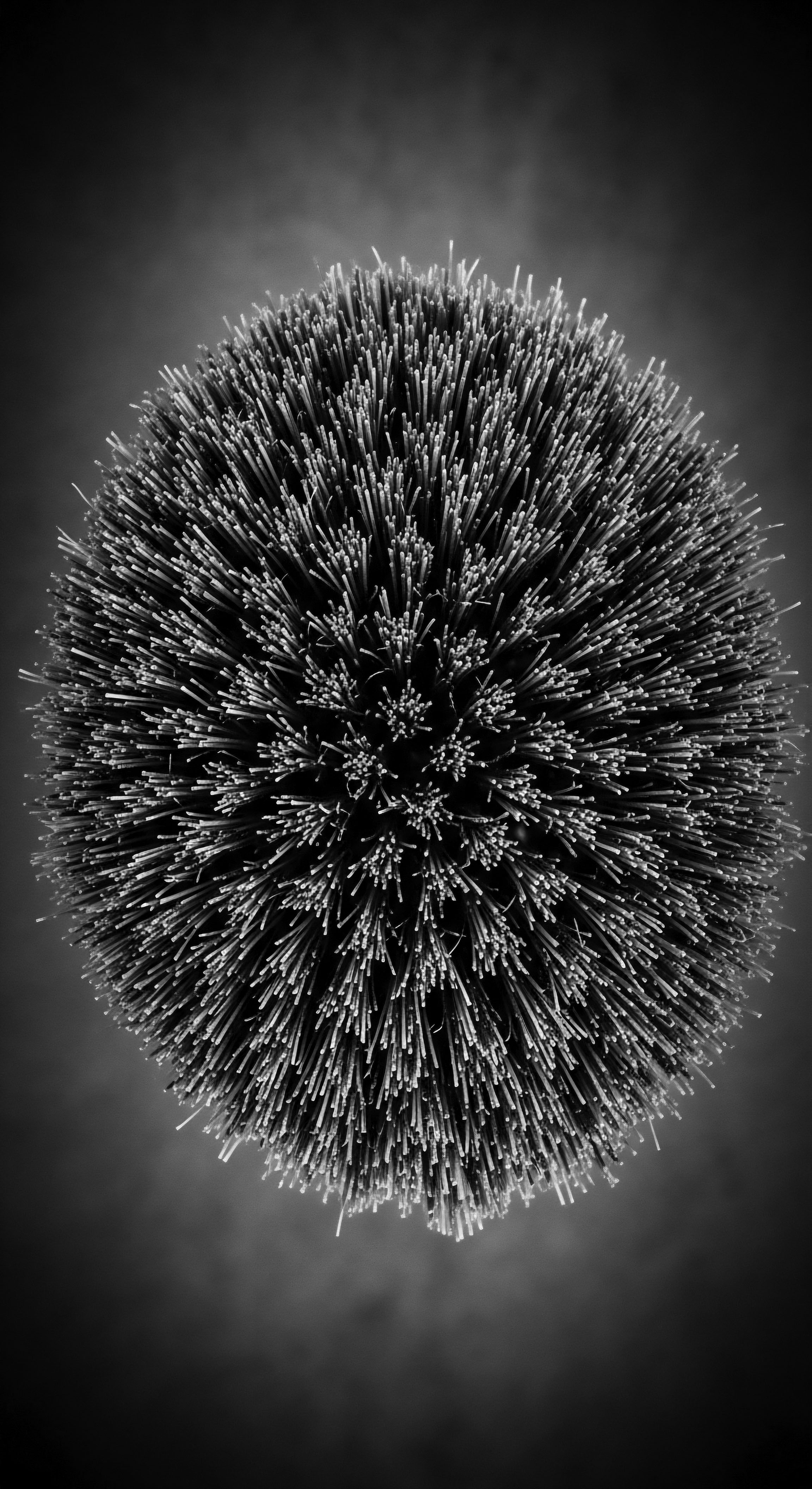
The Hair’s Protective Cloak ❉ Understanding the Acid Mantle
The acid mantle, a thin, protective film residing on the surface of the skin and scalp, comprises a blend of sebum, sweat, and amino acids. This biological barrier acts as a frontline defense, preventing the proliferation of harmful bacteria and fungi, while simultaneously safeguarding against excessive moisture loss. When this mantle is disrupted by overly alkaline products or environmental aggressors, the scalp can become irritated, itchy, and prone to dryness.
For hair, particularly that which coils and kinks, a compromised acid mantle translates directly to diminished health and vibrancy. The protective scales of the cuticle, which should lie flat, begin to lift, making the hair feel rough and susceptible to damage.
Ancestral communities, through their deep connection to the land and its bounty, understood the importance of this protective layer, albeit without the scientific terminology. They observed that certain natural cleansers, while effective, could leave the hair feeling stripped or coarse. Their responses often involved subsequent applications of balancing agents.
This wisdom, passed down through oral traditions and communal practices, speaks volumes about their intuitive grasp of hair’s needs. The practice of rinsing hair with herbal infusions or fruit-based waters, often slightly acidic, served to restore the hair’s natural pH, closing the cuticle and restoring its protective sheen.
- Cuticle Integrity ❉ The outermost layer of the hair, the cuticle, is designed to lie flat in a slightly acidic environment, reflecting light and retaining moisture.
- Moisture Retention ❉ An optimal pH level helps to seal the hair’s cuticle, preventing water from escaping the hair shaft and maintaining hydration.
- Scalp Health ❉ The scalp’s acid mantle provides a natural defense against bacteria and fungi, which is crucial for a healthy environment for hair growth.

Intermediate
Moving beyond the foundational understanding of pH, we delve into its intricate dance with the very structure of textured hair, recognizing how this interplay has shaped care practices across generations. The meaning of pH balance for textured hair extends to its profound influence on the hair’s protein structure, particularly the keratin, which forms the core of each strand. When hair encounters substances outside its ideal pH range, especially those leaning towards alkalinity, the disulfide bonds within the keratin can be weakened, leading to increased porosity and a compromised structural integrity. This is not merely a scientific observation; it echoes through the lived experiences of Black and mixed-race individuals, whose hair has often been subjected to harsh treatments, both historically and contemporarily, unknowingly disrupting this delicate equilibrium.
Consider the historical trajectory of hair care products designed for textured hair. For many generations, the prevailing formulations, particularly those aimed at straightening or relaxing, were intensely alkaline. These chemical processes, while achieving desired aesthetic results for some, fundamentally altered the hair’s pH, often pushing it to extreme levels.
The immediate consequence was often a significant opening of the cuticle, allowing for chemical penetration, but also leading to irreversible damage, chronic dryness, and increased breakage over time. The journey towards understanding pH balance in this context is a journey of reclaiming health and agency over one’s hair.
The meaning of pH balance for textured hair is deeply interwoven with its historical care, reflecting a journey from chemical alteration to a conscious return to natural harmony.
The collective wisdom embedded within traditional hair care rituals, however, often presented a counter-narrative. Ancestral practices, though lacking modern laboratories, demonstrated an innate understanding of restoration. After using natural cleansing agents that might have been slightly alkaline (such as certain types of ash-based soaps), the subsequent application of acidic rinses—think of the refreshing clarity of a diluted vinegar wash or the nourishing touch of fermented rice water—served to gently bring the hair back into balance. These practices were not just about cleanliness; they were about a holistic restoration of the hair’s natural state, a recognition of its inherent needs.
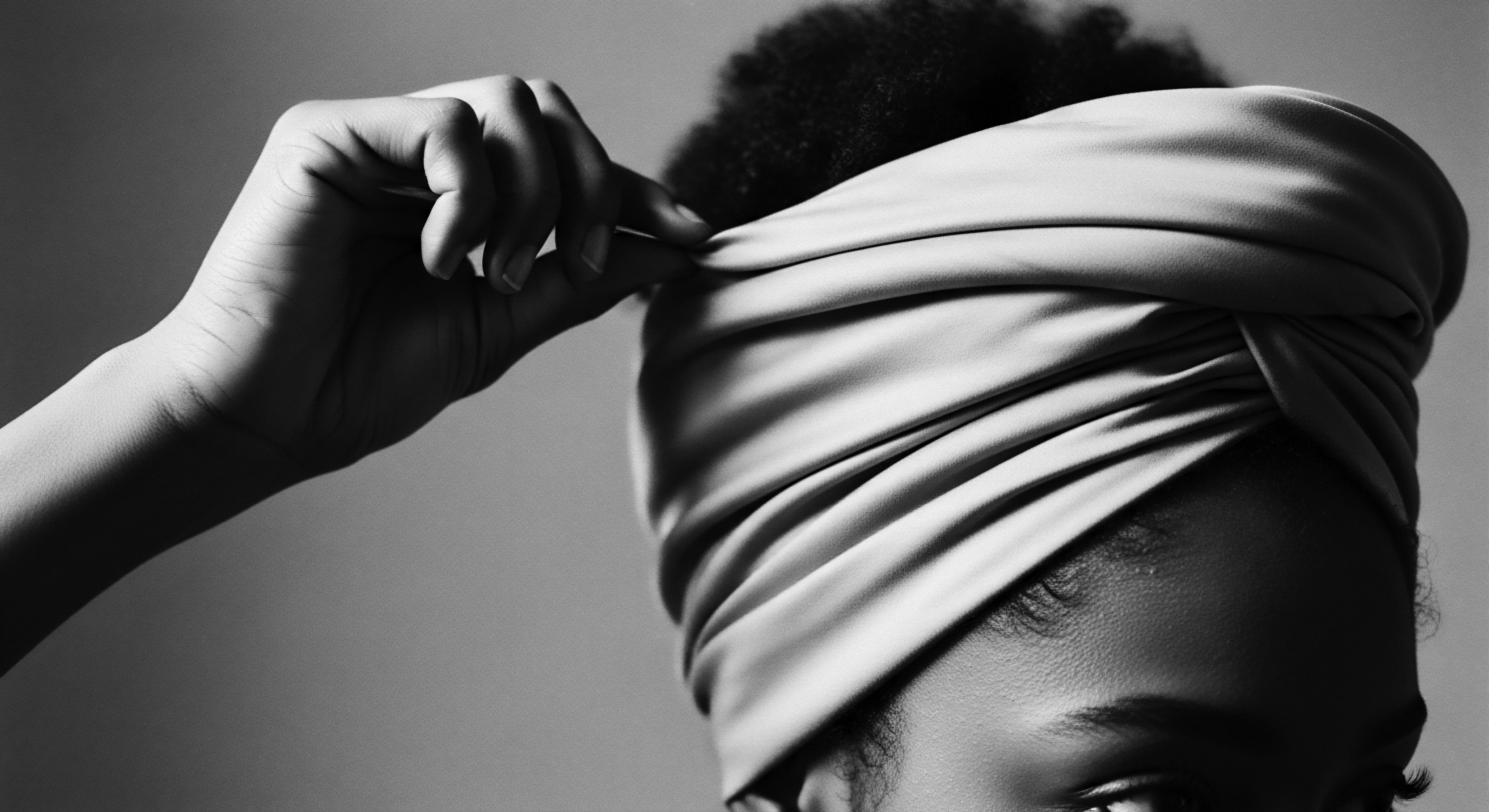
The Impact of Water and Environment on PH
Beyond product application, the very water used for washing hair carries its own pH story. Hard water, prevalent in many regions, contains high mineral concentrations, often making it more alkaline. Repeated washing with alkaline hard water can contribute to mineral buildup on the hair shaft and disrupt the hair’s natural pH, leaving it dull, dry, and prone to tangling. This environmental factor, often overlooked, holds significant implications for those with textured hair, as the intricate curl patterns can trap these mineral deposits more readily, exacerbating issues of dryness and breakage.
In communities where access to soft, naturally balanced water was limited, ancestral solutions often involved collecting rainwater, which is typically slightly acidic, or incorporating specific plant materials into washing rituals to counteract the effects of hard water. These adaptive strategies speak to a deep, practical understanding of environmental chemistry and its impact on hair vitality. The careful selection of natural cleansers and rinses was not merely a matter of availability; it was a testament to an intuitive knowledge of how to maintain the hair’s delicate balance amidst varying environmental conditions.
The journey of textured hair through history is punctuated by shifts in societal beauty standards and the products designed to meet them. For generations, the quest for straighter hair often involved chemical relaxers, which operate at highly alkaline pH levels (typically 10-14). These products break the disulfide bonds in the hair, permanently altering its structure.
While modern relaxers have evolved, the fundamental principle remains ❉ a significant pH shift. This historical context underscores why understanding pH balance is not just about product efficacy, but about recognizing the legacy of how hair has been treated, and how we can consciously choose pathways of healing and preservation.
| Aspect of Care Cleansing Agents |
| Ancestral Wisdom (Implicit PH Understanding) Uses of ash lye for soaps, certain clays, or plant saps (often alkaline, requiring follow-up). |
| Contemporary Science (Explicit PH Knowledge) Formulations of shampoos with balanced pH (5.5-7.0) to cleanse effectively without stripping. |
| Aspect of Care Conditioning & Rinsing |
| Ancestral Wisdom (Implicit PH Understanding) Rinses with fermented rice water, diluted fruit vinegars, herbal infusions (acidic to close cuticles). |
| Contemporary Science (Explicit PH Knowledge) Conditioners and leave-ins formulated at acidic pH (3.5-4.5) to seal cuticles and detangle. |
| Aspect of Care Protective Treatments |
| Ancestral Wisdom (Implicit PH Understanding) Application of natural oils (shea butter, coconut oil), plant butters, and specific plant extracts (neutral to slightly acidic). |
| Contemporary Science (Explicit PH Knowledge) Use of deep conditioners, protein treatments, and pH-balanced stylers to fortify and protect. |
| Aspect of Care Both historical and modern practices reveal a shared goal ❉ maintaining hair's resilience and vibrancy through thoughtful attention to its environment. |
The continuous thread connecting these historical practices to our present understanding is the recognition that hair, especially textured hair, thrives in a state of delicate equilibrium. The ancestral wisdom, though expressed through different means, laid the groundwork for contemporary scientific insights. It reminds us that care is not just about what we apply, but how it interacts with the very fabric of our strands, honoring their inherent nature.
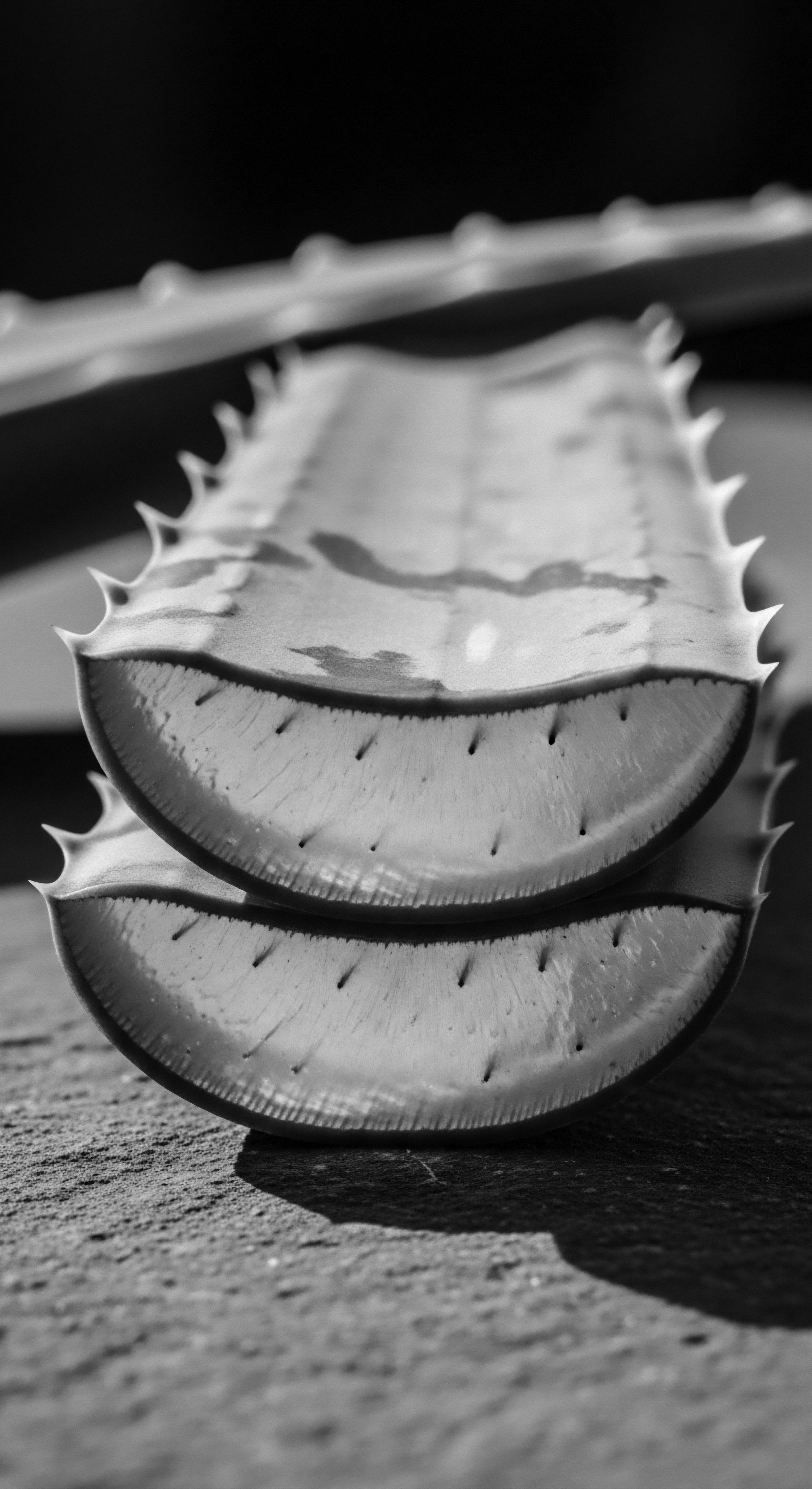
Academic
The meaning of pH balance, from an academic perspective, represents the precise hydrogen ion concentration within a solution, dictating its relative acidity or alkalinity, a critical biophysical parameter for the optimal function and structural integrity of the hair fiber and scalp epidermis. This concept, far from being a mere technicality, encapsulates the complex interplay between molecular biology, environmental factors, and the socio-historical experiences that have shaped textured hair care. It is a profound subject demanding rigorous examination, particularly when considering the unique physiological characteristics of hair with coily, kinky, and wavy patterns, and the historical context of its treatment.
The hair shaft, primarily composed of keratin proteins, exhibits a natural pH range between 4.5 and 5.5, which is slightly acidic. This acidity is instrumental in maintaining the compact structure of the cuticle, the outermost layer of the hair. When the hair is exposed to substances with a pH significantly higher than its natural state—that is, alkaline solutions—the cuticle scales lift, causing the hair shaft to swell. This swelling increases the hair’s porosity, making it more susceptible to water absorption and loss, and significantly diminishing its mechanical strength.
Furthermore, prolonged exposure to high pH environments can hydrolyze the disulfide bonds within the keratin structure, leading to irreversible damage, including protein loss, reduced elasticity, and increased susceptibility to breakage. This biochemical vulnerability is particularly pronounced in textured hair, where the inherent twists and turns along the hair shaft create points of structural weakness, making cuticle integrity even more vital for overall strand resilience.
Academically, pH balance is the precise measure of hydrogen ion concentration, a critical biophysical parameter for hair’s structural integrity, especially significant for textured hair’s unique vulnerabilities.
Historically, hair care practices, particularly within the African diaspora, have often navigated a complex relationship with pH. Traditional cleansing agents, born from necessity and resourcefulness, frequently utilized materials that were inherently alkaline. For instance, the widespread use of Traditional African Black Soap, a cherished cleansing agent across West Africa, derived from the ashes of plantain skins, cocoa pods, or shea tree bark, presents a compelling case study. Scientific analyses confirm its alkaline nature.
Research by Asare-Bediako (2014) indicates that traditional African black soap can exhibit a pH ranging from 8 to 10. While highly effective for cleansing, this alkalinity, if not subsequently balanced, could potentially lead to cuticle lifting and moisture depletion, particularly for delicate textured hair.
However, ancestral wisdom, deeply rooted in empirical observation, often provided intuitive counter-balancing measures. The subsequent application of natural acidic rinses, such as those derived from fermented rice water, hibiscus, or various fruit acids, would have served to re-acidify the hair and scalp, effectively closing the cuticle and restoring its natural protective state. This intricate dance between cleansing and conditioning, between alkalinity and acidity, represents a sophisticated, albeit unarticulated, understanding of pH dynamics. It was a pragmatic response to observed hair behavior, a testament to generations of experimentation and knowledge transmission.
The historical imposition of European beauty standards, often necessitating chemical straightening (relaxers with pH levels reaching 12-14), further exacerbated these pH challenges, leading to widespread damage and a generational struggle to maintain hair health within Black communities. This historical context underscores the deep significance of pH balance as not just a scientific principle, but a cultural one, reflecting the resilience and adaptability of care practices.

The Biomechanical and Biophysical Implications of PH Extremes
From a biomechanical standpoint, deviations from the hair’s natural acidic pH directly influence its tensile strength and elasticity. Alkaline environments cause the hair fiber to swell due to water absorption, leading to increased friction between individual strands and making the hair more susceptible to mechanical damage during manipulation, such as combing or styling. This phenomenon is particularly detrimental to textured hair, which, due to its helical and elliptical cross-sectional shape, already experiences higher friction and entanglement compared to straight hair. The integrity of the hair’s outer cuticle, maintained by an acidic pH, is crucial for minimizing this friction and protecting the inner cortex.
Moreover, the surface charge of hair is pH-dependent. At its natural acidic pH, hair carries a net negative charge, which is crucial for the effective deposition of cationic conditioning agents. When the hair is exposed to alkaline conditions, this negative charge can be altered, potentially reducing the efficacy of conditioning treatments designed to smooth the cuticle and reduce static.
The cumulative effect of repeated pH imbalances, often stemming from harsh cleansing agents or chemical treatments, can lead to chronic dryness, dullness, and progressive weakening of the hair fiber, necessitating more intensive and targeted restorative interventions. Understanding these biophysical ramifications allows for the development of targeted care strategies that respect and preserve the hair’s inherent architecture.
The ancestral practice of using naturally occurring oils and butters, such as Shea Butter (from the African shea tree, Vitellaria paradoxa ) or Coconut Oil, also plays a role in maintaining pH. These emollients, generally possessing a neutral to slightly acidic pH, form a protective barrier on the hair shaft, reducing moisture loss and offering a degree of protection against external pH fluctuations. Their consistent application, a cornerstone of many traditional hair care regimens, implicitly supported the hair’s acid mantle, contributing to long-term hair health and resilience. This traditional approach offers a powerful counterpoint to modern product development, which sometimes prioritizes aggressive cleansing over gentle, pH-preserving care.
- Keratin Denaturation ❉ Extreme pH values, especially high alkalinity, can lead to the irreversible alteration of keratin proteins, diminishing hair strength and elasticity.
- Cuticle Disruption ❉ An elevated pH causes the hair’s cuticle scales to lift, increasing porosity and making the hair vulnerable to moisture loss and physical damage.
- Charge Modification ❉ pH impacts the hair’s surface charge, influencing how conditioning agents adhere and perform, which is vital for detangling and smoothing.
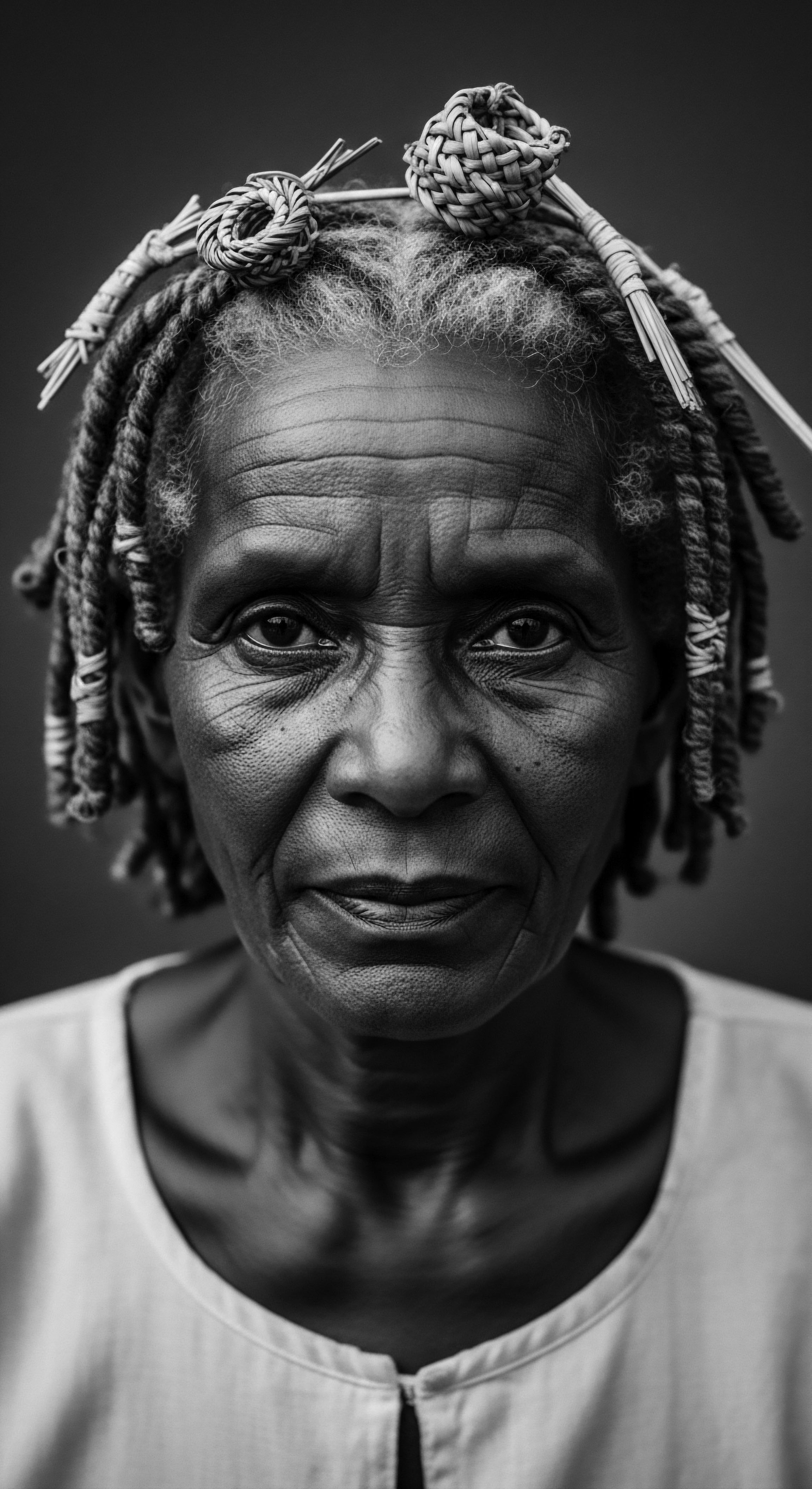
Interconnected Incidences ❉ PH Balance and Hair Porosity in Textured Hair
The concept of pH balance is inextricably linked to hair porosity, a critical characteristic of textured hair. Hair porosity refers to the hair’s ability to absorb and retain moisture, largely determined by the condition of its cuticle. High porosity hair, often a result of genetic predisposition, chemical damage, or environmental stressors, has an elevated cuticle, allowing moisture to enter and exit rapidly. Conversely, low porosity hair possesses a tightly bound cuticle, making it challenging for moisture to penetrate.
pH balance acts as a direct modulator of porosity. When hair is exposed to alkaline products, the cuticle lifts, artificially increasing porosity. For those with naturally high porosity textured hair, this exacerbates an already vulnerable state, leading to extreme dryness and fragility.
Conversely, using products formulated within the hair’s natural acidic pH range helps to flatten the cuticle, reducing porosity and improving moisture retention, particularly beneficial for high porosity strands. For low porosity hair, a slightly alkaline pre-shampoo treatment (such as a diluted baking soda rinse, used sparingly and followed by an acidic rinse) might temporarily lift the cuticle just enough to allow beneficial ingredients to penetrate, provided it is meticulously followed by an acidic rinse to restore the hair’s natural pH and close the cuticle. This strategic manipulation of pH, rooted in a deep understanding of hair’s unique needs, transforms the definition of pH balance from a static concept into a dynamic tool for personalized care. The historical use of Clay Washes, for example, often with a slightly acidic to neutral pH, could have provided a gentle cleansing action without excessively stripping the hair, thus maintaining its delicate porosity balance.
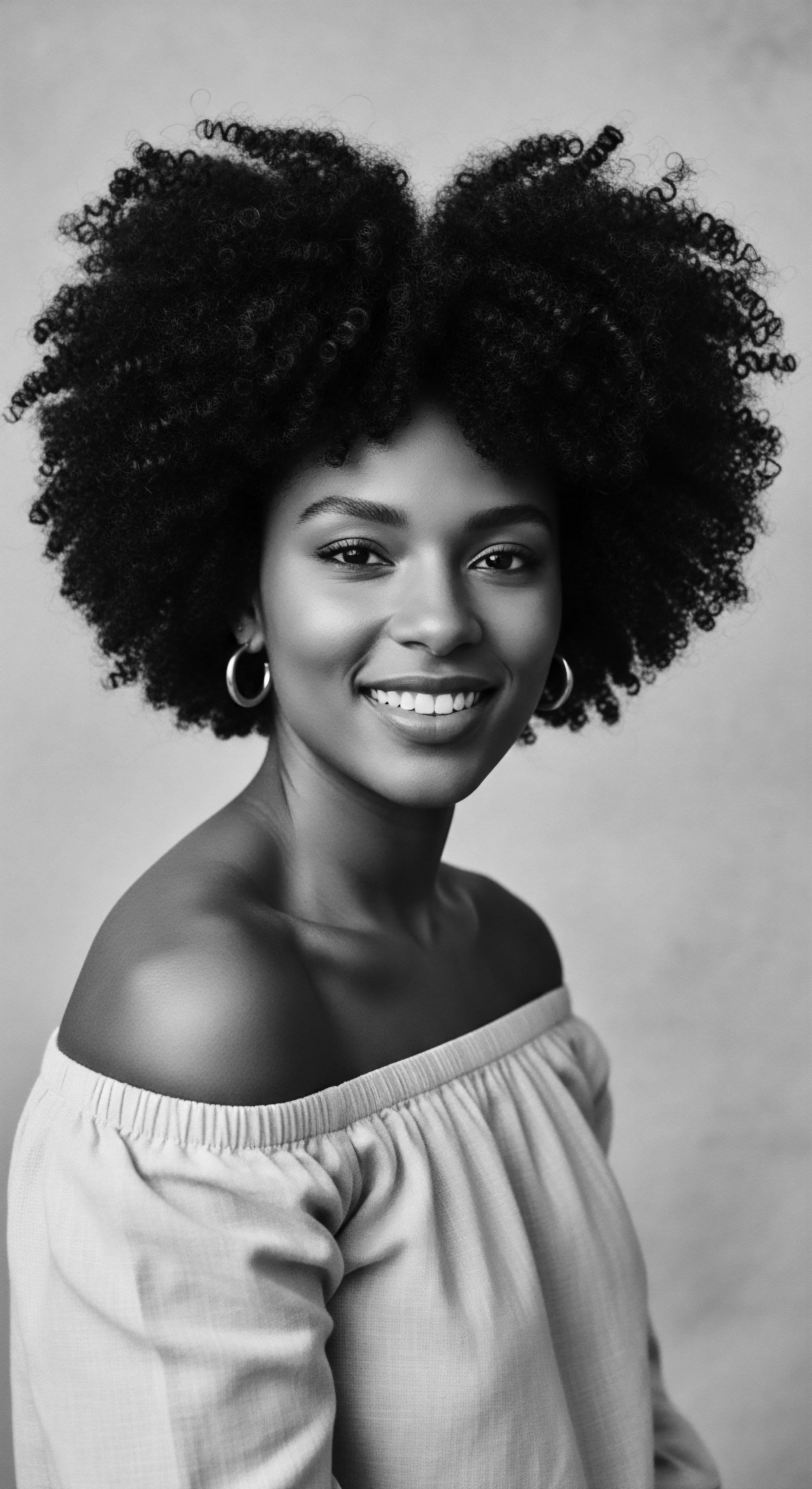
Reflection on the Heritage of PH Balance
The journey through the nuanced understanding of pH balance for textured hair is more than a scientific exploration; it is a profound meditation on heritage, a soulful reconnection to the ancestral wisdom that has always guided our relationship with our strands. From the elemental biology of the hair fiber to the enduring traditions of care passed down through generations, the concept of pH balance emerges as a continuous thread, linking past ingenuity with present insights. It reminds us that our forebears, without the benefit of modern laboratories, possessed an intimate knowledge of the earth’s offerings and their interaction with the body, an intuitive grasp of equilibrium that protected and honored their hair.
This understanding of pH balance, deeply rooted in the ‘Soul of a Strand’ ethos, is not merely about preserving hair; it is about preserving a legacy. It speaks to the resilience of Black and mixed-race communities, who, despite systemic challenges and imposed beauty standards, maintained practices that intuitively respected the inherent nature of their hair. The meticulous care of textured hair, often involving a conscious return to natural ingredients and mindful routines, becomes an act of defiance, a celebration of identity, and a quiet homage to those who came before. It is a recognition that our hair is not just fiber; it is a living archive, carrying stories, traditions, and the echoes of ancestral wisdom.
As we move forward, armed with both scientific clarity and historical reverence, our approach to pH balance transforms into a purposeful act of self-care and cultural affirmation. It encourages us to select products and practices that harmonize with our hair’s innate design, rather than imposing external ideals. This conscious choice is a testament to the enduring power of heritage, a vibrant declaration that the wisdom of the past continues to illuminate our path toward unbound beauty and holistic well-being. The pH balance, in this light, becomes a symbol of equilibrium, not just for our hair, but for our connection to our deepest roots.
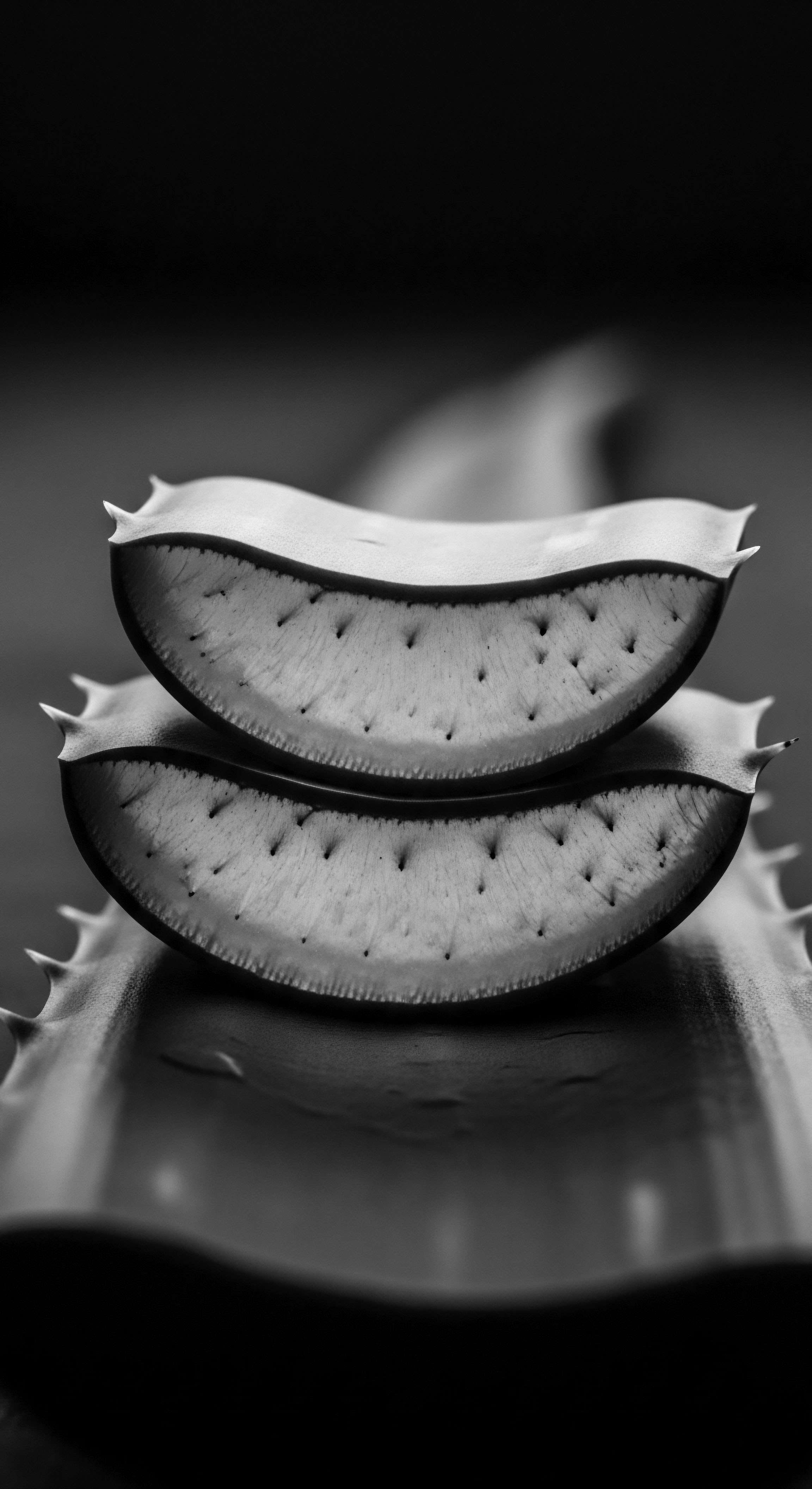
References
- Asare-Bediako, K. (2014). The chemical properties of traditional African black soap and its potential as a skin cleanser. International Journal of Chemical and Biochemical Sciences, 5, 23-28.
- Robbins, C. R. (2012). Chemical and physical behavior of human hair. Springer Science & Business Media.
- Marsh, J. M. (2018). The chemistry of cosmetics ❉ an overview of the science of skin, hair and nail products. Royal Society of Chemistry.
- Gueguen, A. (2017). Hair care ❉ A comprehensive guide to hair health and beauty. John Wiley & Sons.
- Draelos, Z. D. (2011). Cosmetic dermatology ❉ Products and procedures. Wiley-Blackwell.
- Dias, M. F. R. (2015). Hair cosmetics ❉ An overview. International Journal of Trichology, 7(1), 2-15.
- Crawford, S. A. (2016). African-American hair care ❉ A historical perspective. University of Texas Press.
- Hunter, L. (2011). The science of black hair ❉ A comprehensive guide to textured hair care. Lulu.com.
- Ogunwole, P. O. (2004). The hair and the ancestors ❉ Hair styles and hair care practices in Africa. University Press of America.
